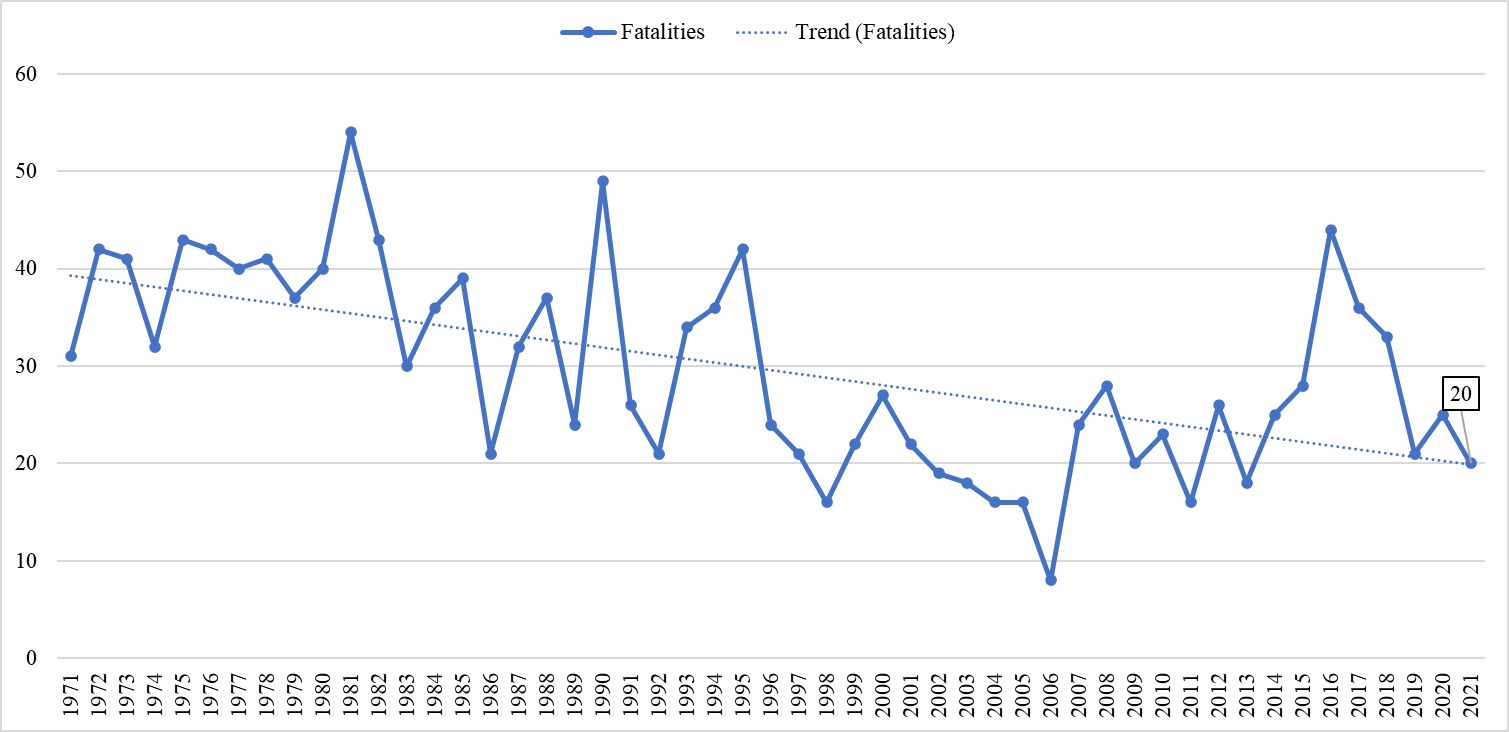2021 Summary of U.S. Agricultural Confined Space-Related Injuries and Fatalities
As of the end of 2021, the PACSID contained information on 2,465 cases documented between 1962 and 2021, 3 that resulted in an injury, fatality, or required emergency extrication by first responders. Grain storage and handling facilities and/or grain transport vehicles were involved in the overwhelming majority of cases, and 1,331 cases (59%) were fatal.
2020 Summary of U.S. Agricultural Confined Space-Related Injuries and Fatalities
As of the end of 2020, the PACSID contained information on 2,404 cases documented between 1962 and 2020, that resulted in an injury, fatality, or required emergency extrication by first responders. Of these cases, 1,442 (60%) were fatal with 1,731 (72%) involving grain storage and handling facilities, and grain transport vehicles. Figure 1 provides a distribution of all cases by agent category.
2019 Summary of U.S. Agricultural Confined Space-Related Injuries and Fatalities
As of the end of 2019, the PACSID contained information on 2,117 cases documented between 1962 and 2019 that resulted in an injury, fatality, or required emergency extrication by first responders. Of these cases 1,276 (60%) were fatal with 1,496 (71%) involving grain storage and handling facilities. Figure 1 provides a breakdown of cases by facilities involved.
2018 Summary of U.S. Agricultural Confined Space-Related Injuries and Fatalities
In 2018, there were 61 documented cases, an increase of 13% over the 54 cases reported in 2017. Of these cases, there were 30 documented grain entrapment cases,4 6 reported falls into or from grain storage structures, 7 asphyxiations due to deficient oxygen levels or toxic environments, and 11 equipment entanglements that occurred while working inside or around agricultural confined spaces, such as those involving in-floor and sweep augers, (Figure 1). Other incident types involved forage silos, manure pits, and pump pits. Grain entrapments accounted for 49% of the documented cases, a lower percentage than the historical average. For incident types with more than one case, falls and entrapments had the highest fatality rate reported at 100% and 50% respectively. In other words, 50% of the 30 victims entrapped in grain ended up being a fatality. The total number of fatal cases (27) was lower than the number of non-fatal cases (31). These figures are nearly identical to the 5 year running average of 31.40 non-fatal cases, and 27.40 fatalities per year. However, 2018 showed a decrease in both non-fatal and fatal cases when compared to the 10-year running averages of 36.90 and 30.20 cases per year respectively.
2017 Summary of U.S. Agricultural Confined Space-Related Injuries and Fatalities
“In 2017, there were 23 documented grain entrapment cases[1], 9 reported falls into or from grain storage structures, 2 asphyxiations due to deficient oxygen levels or toxic environments, and 8 equipment entanglements, such as those involving in floor and sweep augers, that occurred while working inside or around agricultural confined spaces (Figure 1). Other incidents involved silos, manure pits and pump pits. Grain entrapments accounted for 43% of the documented cases. For incident types with more than one case, asphyxiations and entrapments had the highest fatality rate reported at 100% and 52% respectively. The number of fatal cases was only slightly lower than the number of non-fatal cases for all confined space incidents, further suggesting an under reporting of non-fatal incidents.. The 5-year and 10-year averages for non-fatal cases was 33.60 and 36.80 cases/year respectively. The 5-year and 10-year averages for fatal cases was 26.80 and 30.70 cases/year respectively. In comparison, in 2017 non-fatal cases (31 cases) were below average for both metrics, and fatal cases (23 cases) were either above or at average. It is speculated that the increase in percentage of fatalities could be due to a significant drop in the number of identified reports of non-fatal cases….”

